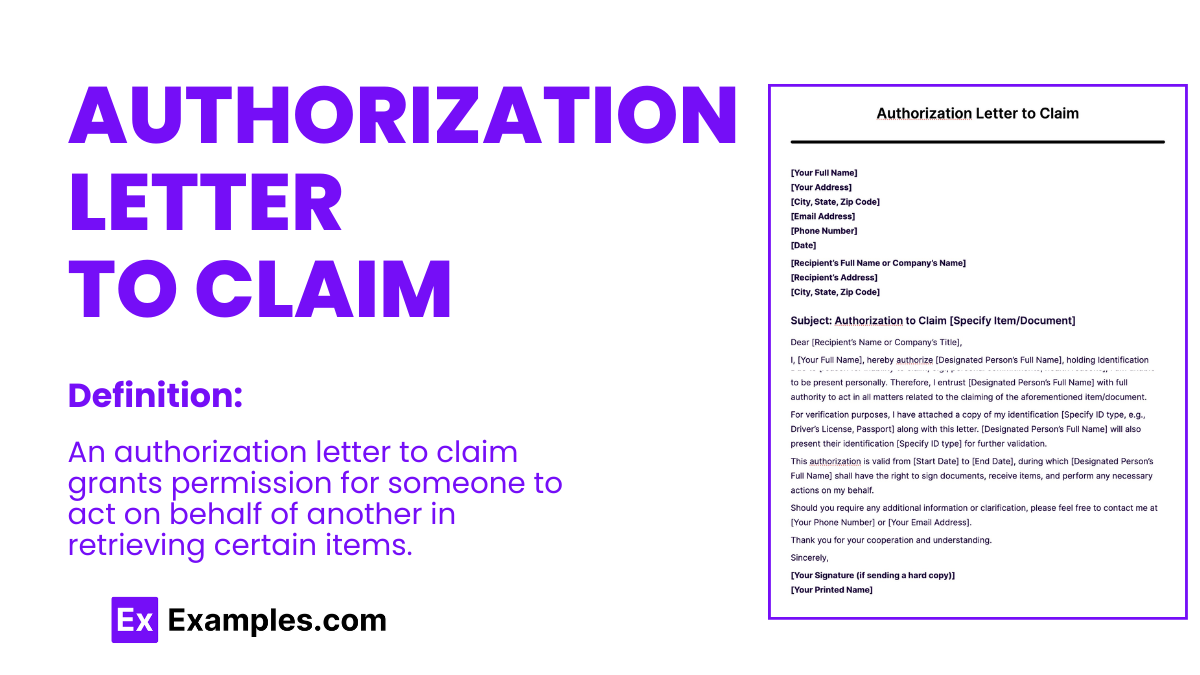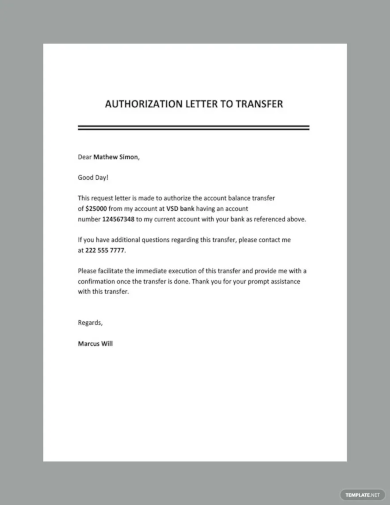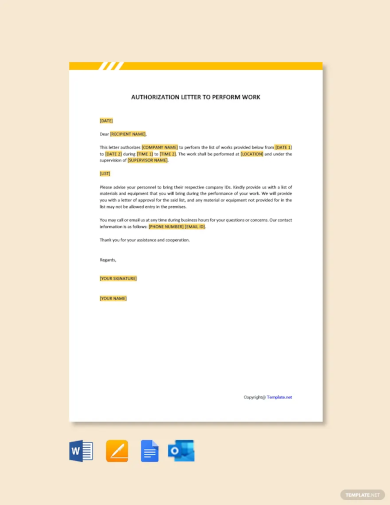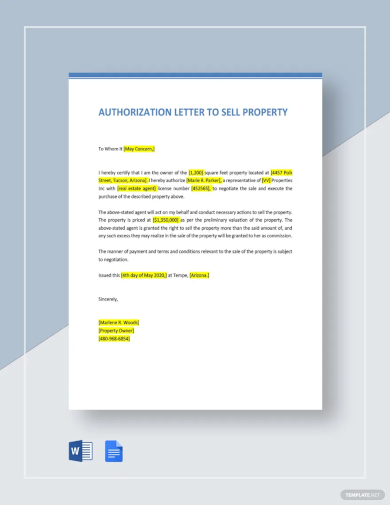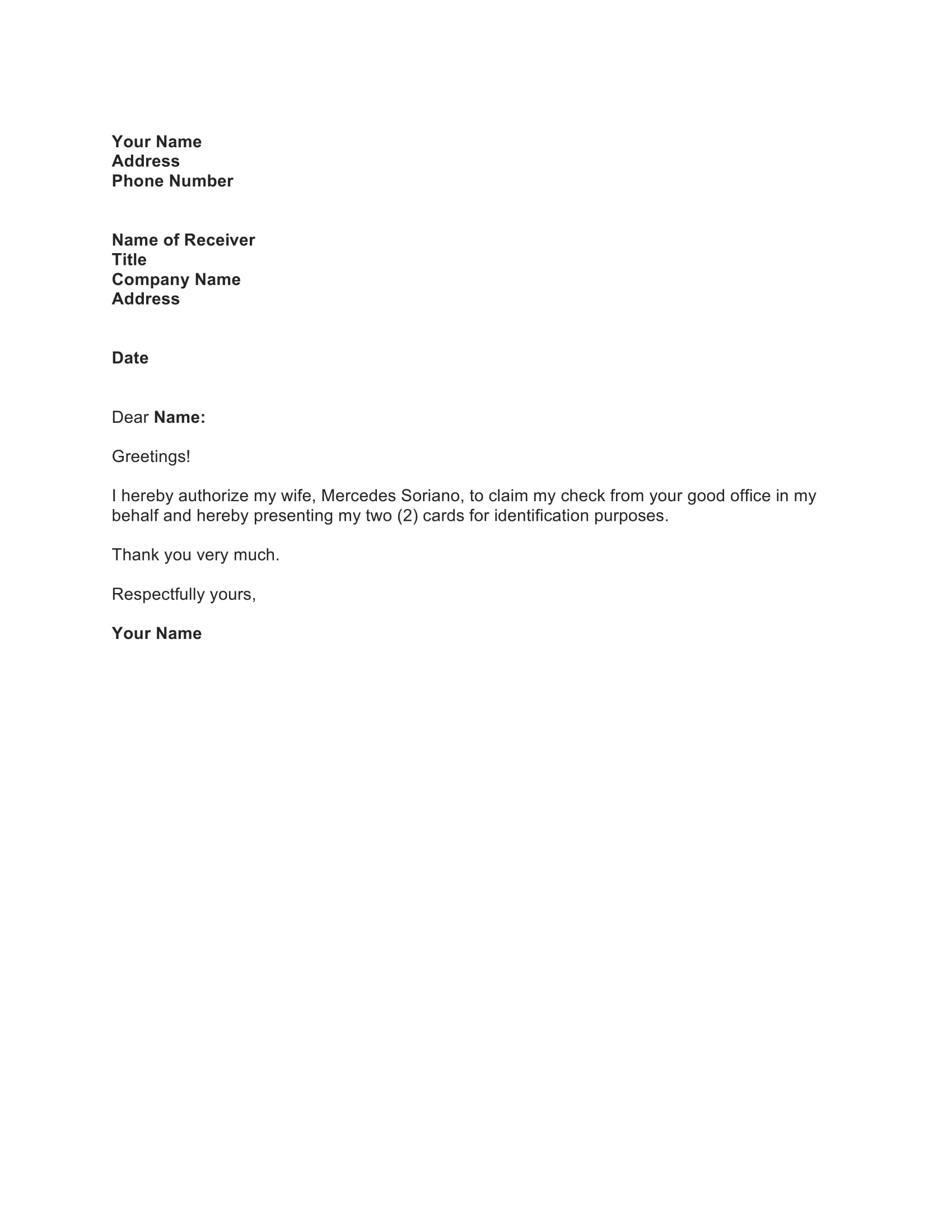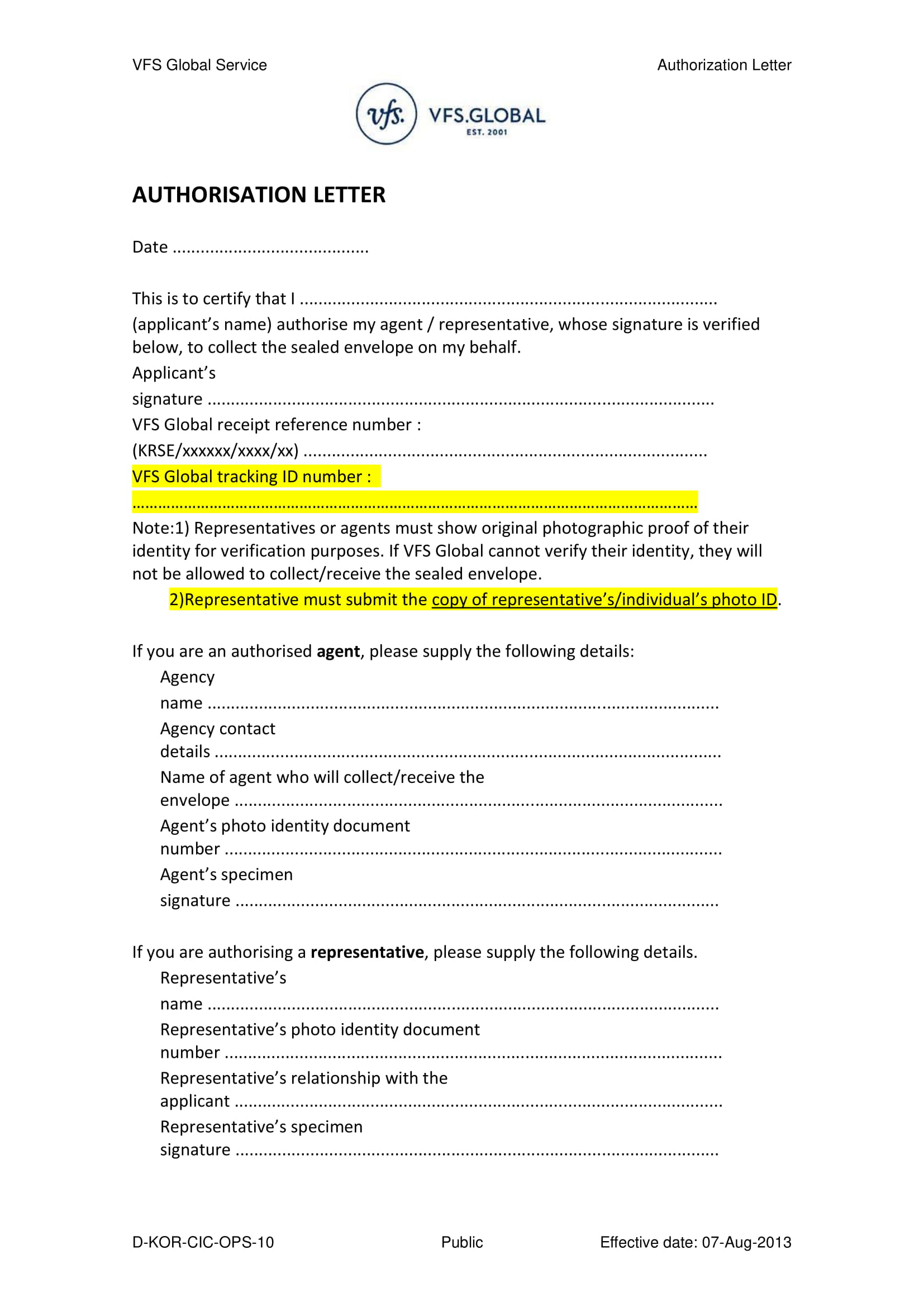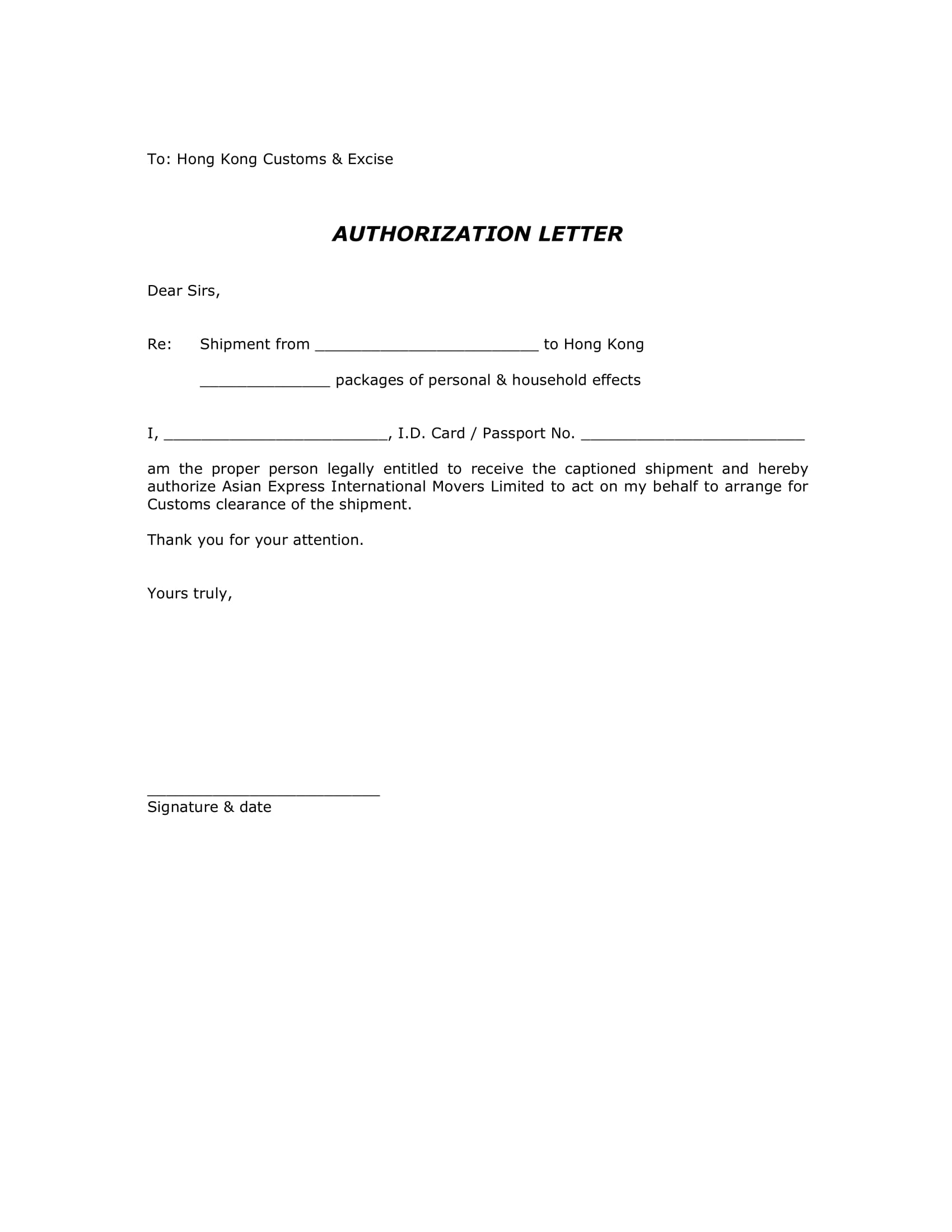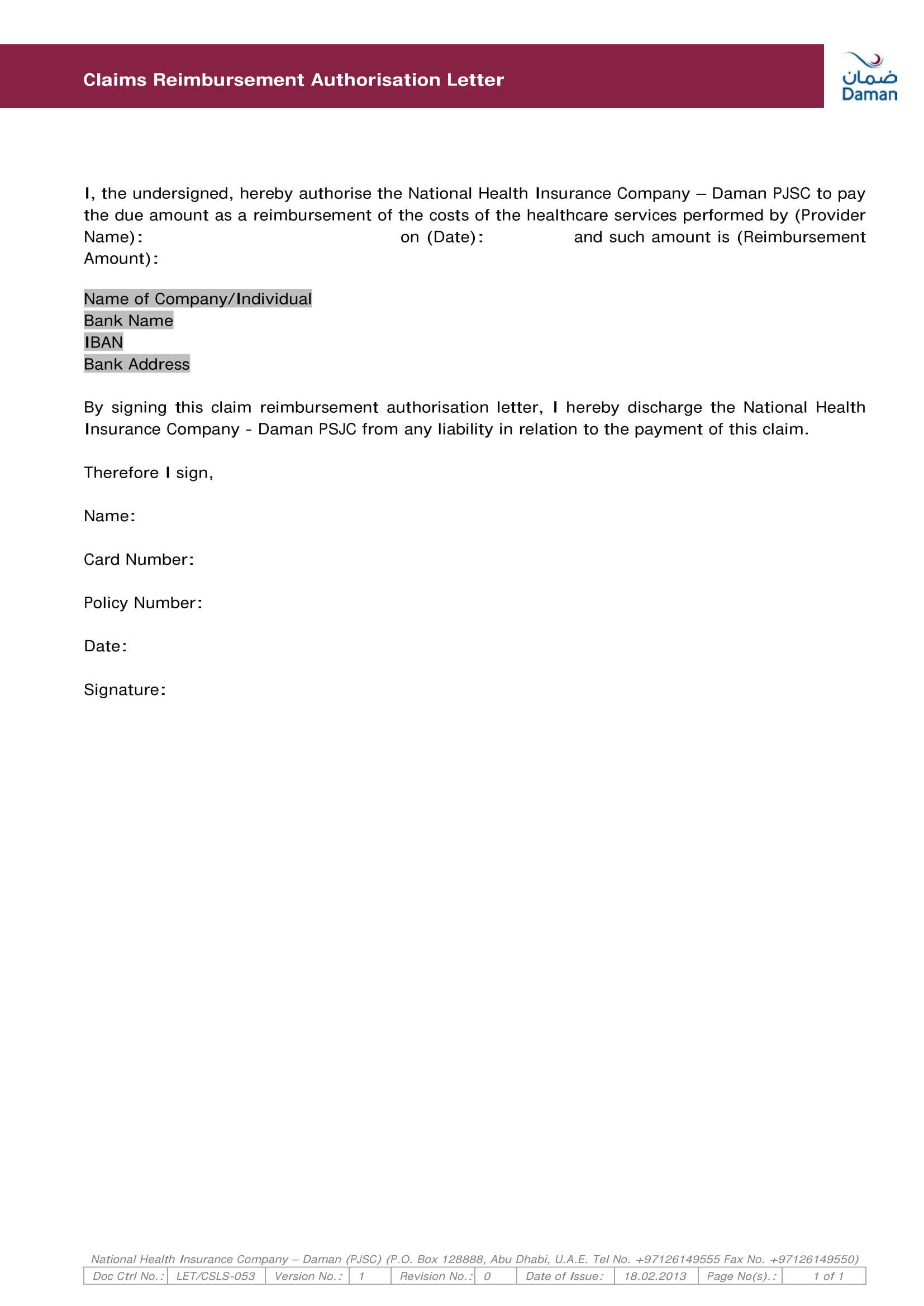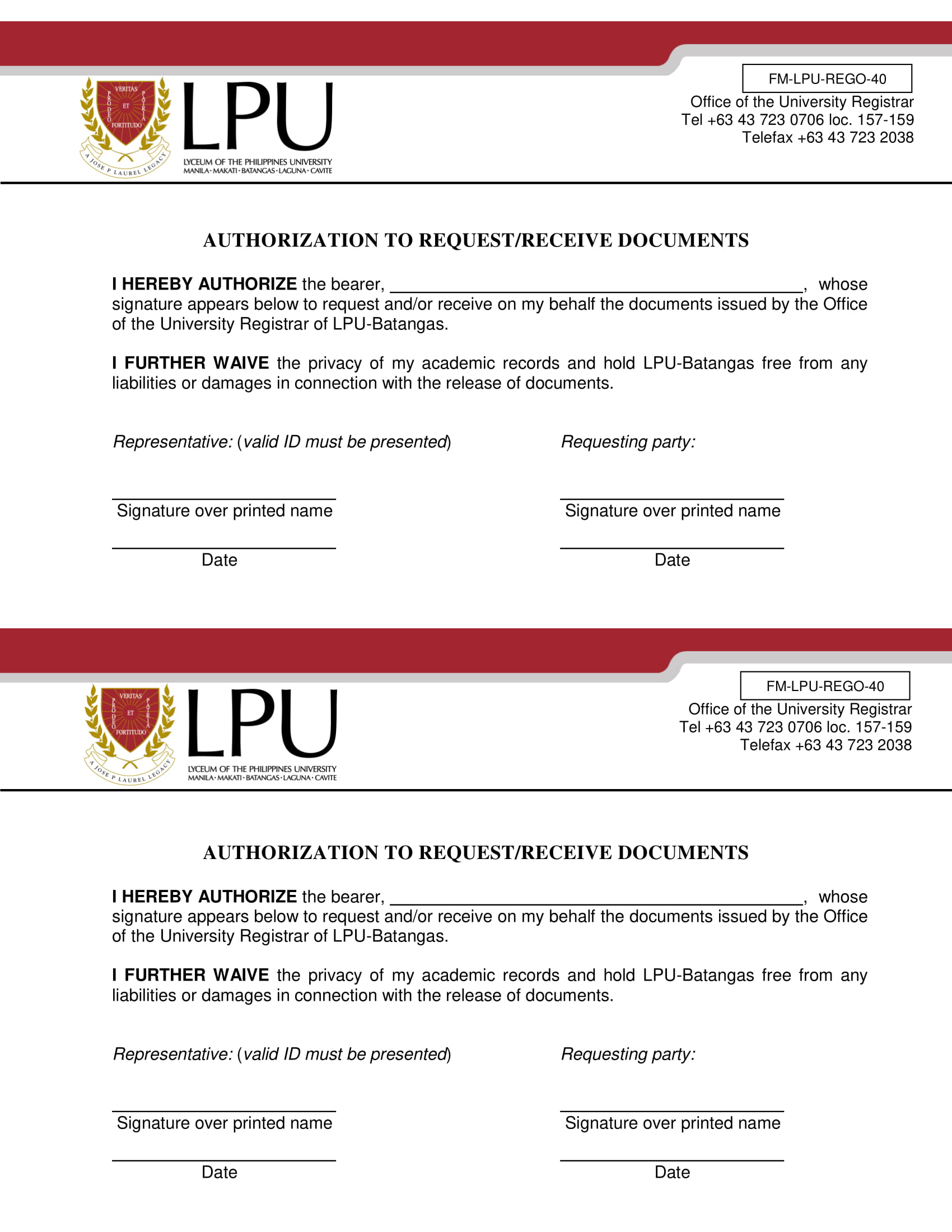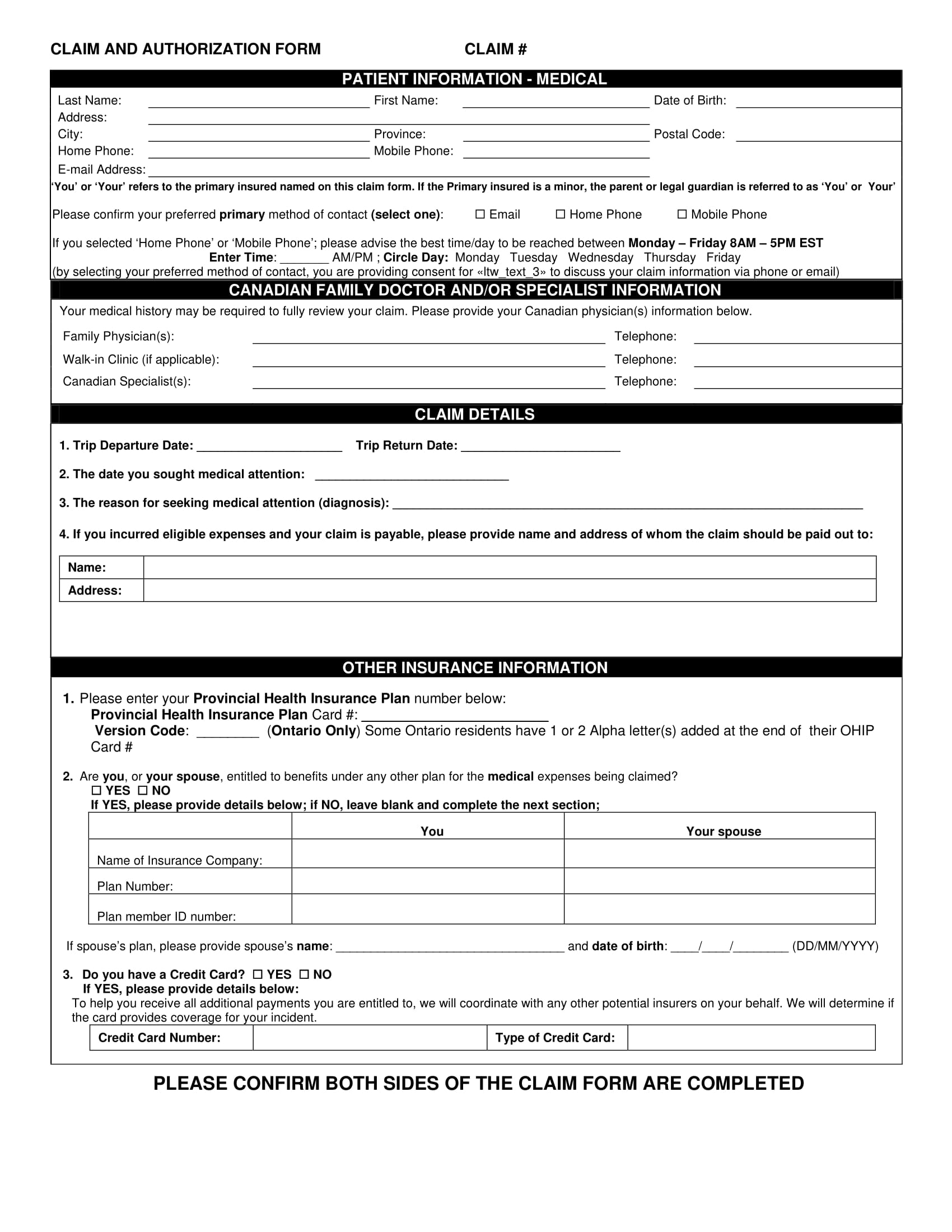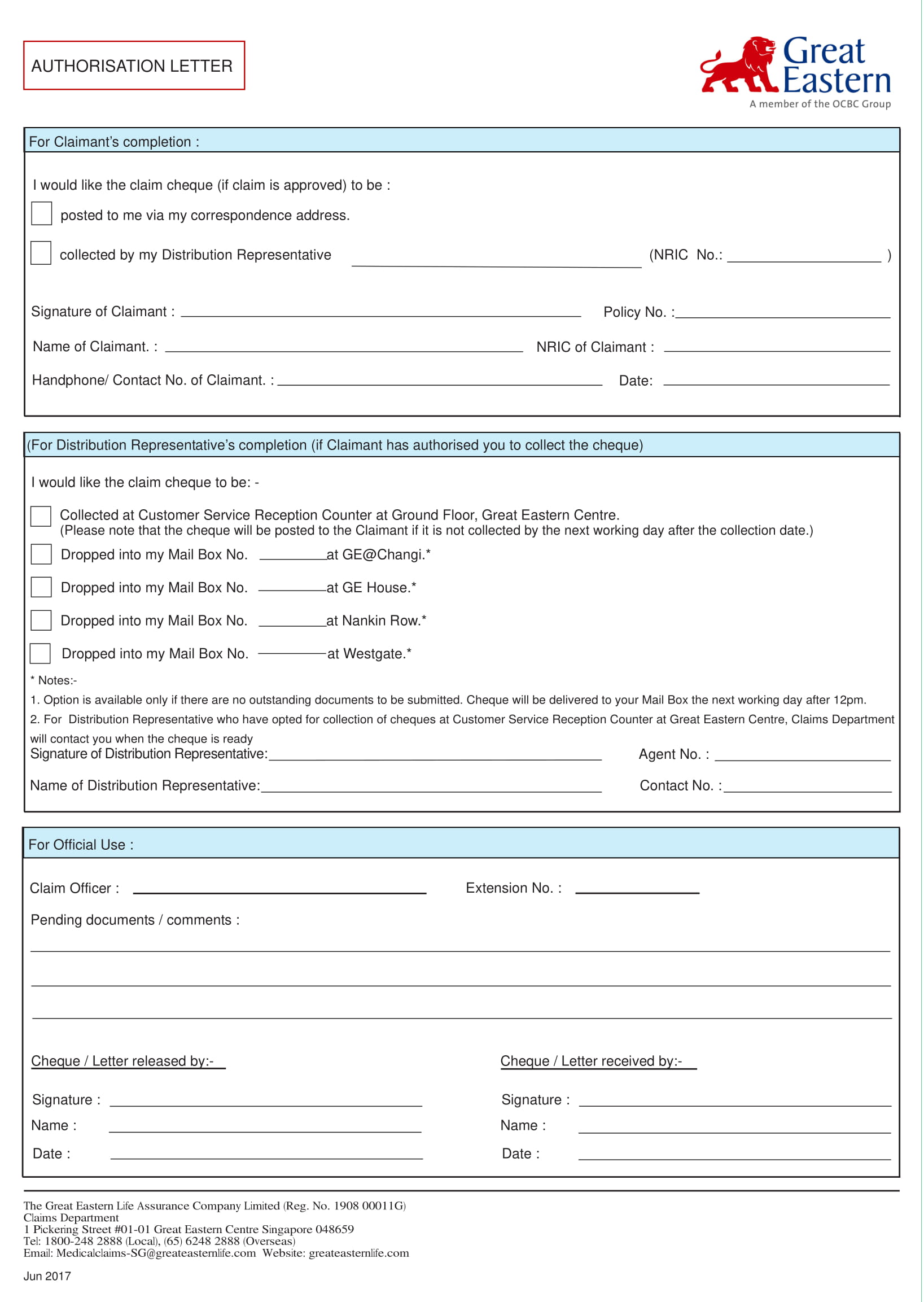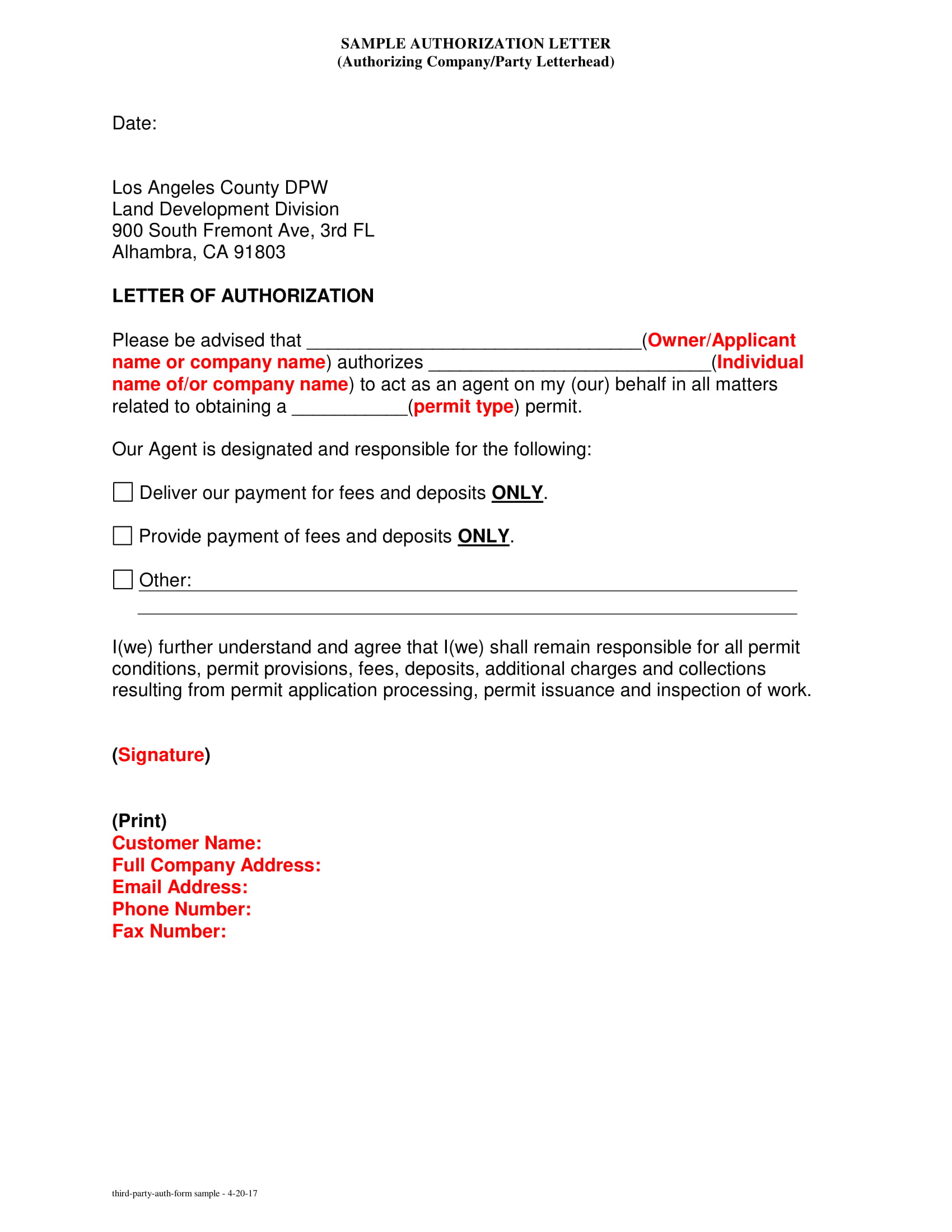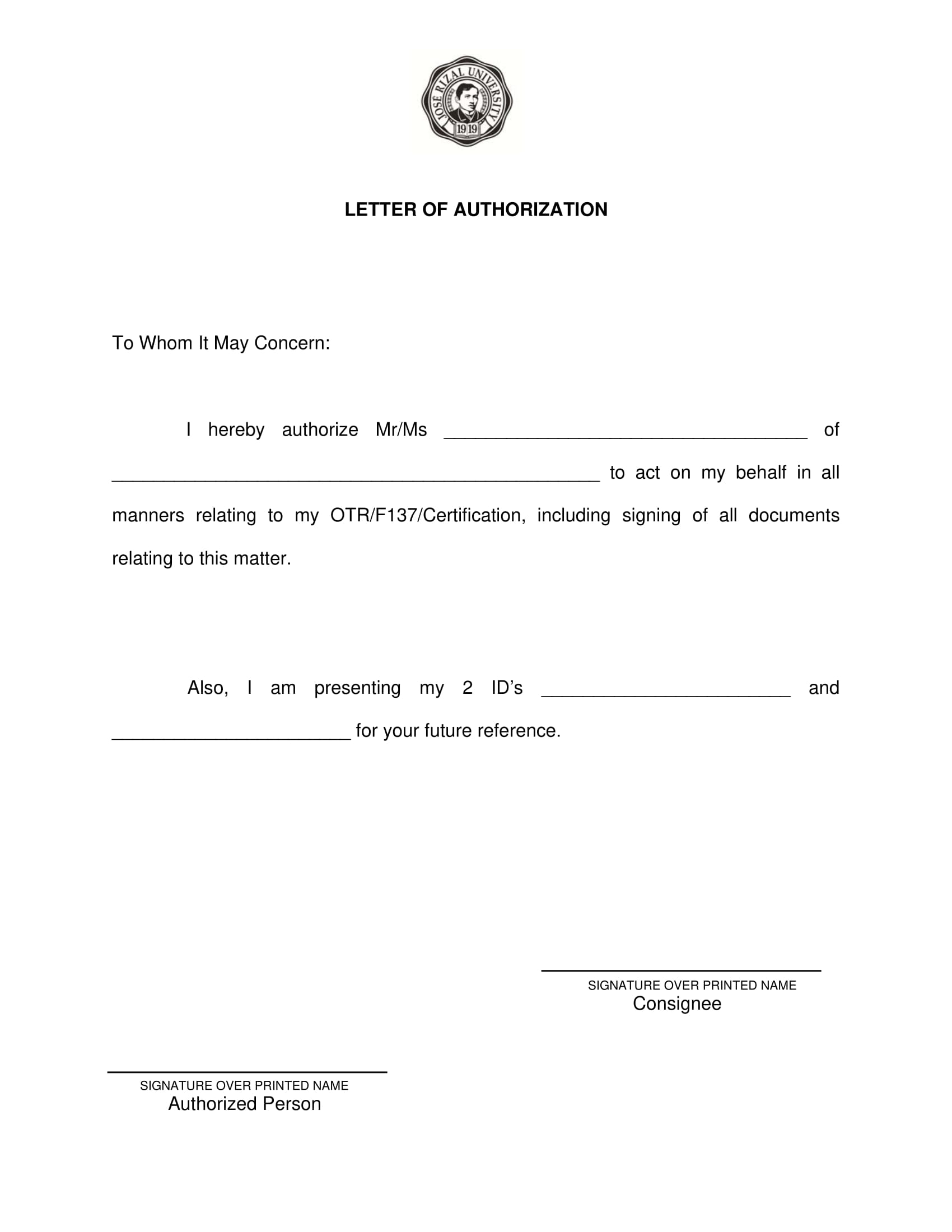18+ Authorization Letter to Claim Examples to Download
Crafting an Authorization Letter to Claim requires precision and clarity. Our guide, enriched with practical letter examples, is designed to streamline this process. It provides you with the tools to write an effective letter, ensuring your representative can successfully claim documents, packages, or other items on your behalf. These examples demonstrate the proper structure and language to use, making it easier for you to delegate this responsibility confidently and securely to someone you trust.
What is Authorization Letter to Claim?
An Authorization Letter to Claim is a written permission given by one person to another, allowing them to claim something on their behalf. This might be for picking up documents, a package, a paycheck, or any other item that belongs to the first person. The letter usually includes details like the names of both people, what is being claimed, and the date. It’s like giving someone a special pass to collect something for you when you can’t do it yourself, ensuring that the process is official and secure.
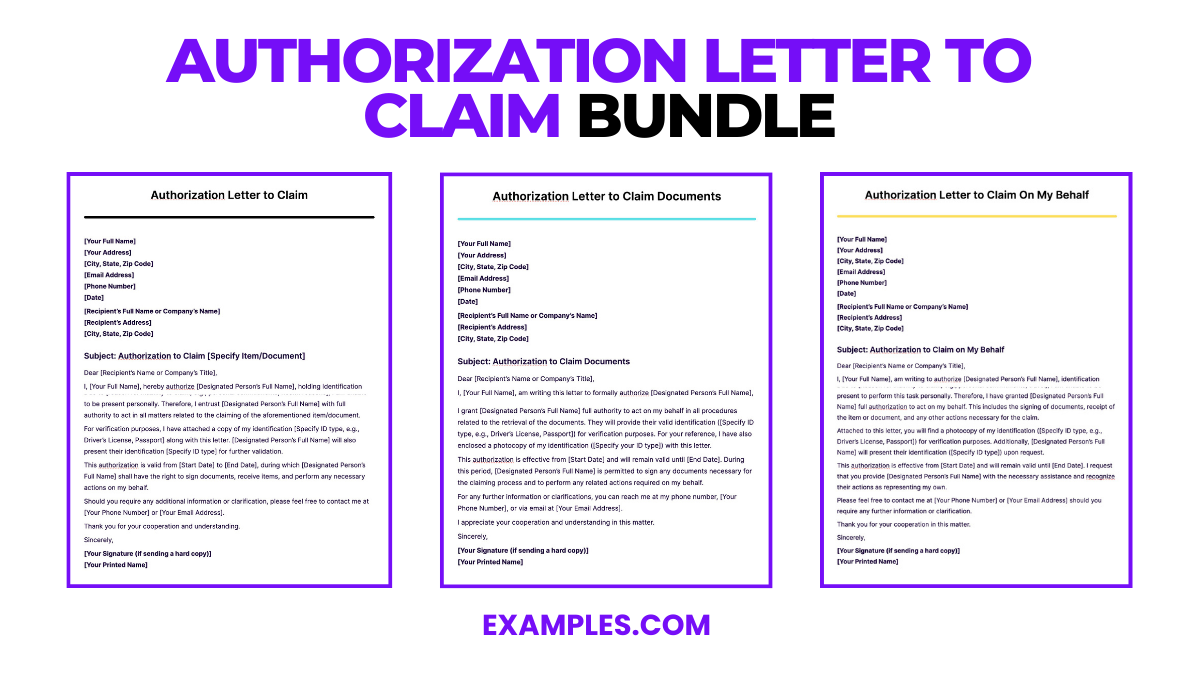
Download Authorization Letter to Claim Bundle
You may be busy doing something else. You may be away for some errands. You may have upcoming many-days seminar. You may be on a vacation. These are some of the reasons why you cannot do some tasks just like claiming your personal documents, school records, medical records, passport, and many other. This is when you need someone to act on your behalf, and this is when you must write an authorization letter to claim, the examples of which are presented in the next section.
Format of Authorization Letter to Claim
[Your Full Name]
[Your Address]
[City, State, Zip Code]
[Phone Number]
[Email Address]
[Date]
[Recipient’s Full Name or Company’s Name]
[Recipient’s Address]
[City, State, Zip Code]
Subject: Authorization Letter to Claim [Item/Document Name]
Dear [Recipient’s Name or Sir/Madam],
I, [Your Full Name], hereby authorize [Authorized Person’s Full Name] to claim [item/document/etc.] on my behalf. Due to [reason for inability to claim personally, e.g., illness, travel, work commitment], I am unable to be present to collect it myself.
[Authorized Person’s Full Name] will provide identification in the form of [type of identification, e.g., driver’s license, passport] for verification purposes. This letter is to confirm that they have my full consent to act on my behalf in this matter.
The details of the [item/document/etc.] to be claimed are as follows:
- [Detail 1, e.g., Description of the item/document]
- [Detail 2, e.g., Reference or identification number]
- [Any other relevant details]
Please provide all necessary assistance and paperwork to [Authorized Person’s Full Name] for the successful completion of this transaction. If you have any questions or need further verification, please do not hesitate to contact me at [Your Phone Number] or [Your Email Address].
Thank you for your attention to this matter.
Sincerely,
[Your Signature (if sending a hard copy)] [Your Printed Full Name]
Best Example of Authorization Letter to Claim
John Doe
123 Maple Street
New York, NY 10001
johndoe@email.com
555-123-4567
February 8, 2024Jane Smith
Manager
XYZ Courier Services
456 Oak Avenue
New York, NY 10002Subject: Authorization to Claim Package
Dear Ms. Smith,
I, John Doe, am writing to authorize Michael Brown to claim my package from XYZ Courier Services on my behalf. Currently, I am out of town for business and unable to pick up the package personally.
Michael Brown, my brother, will present his identification, a copy of which is enclosed with this letter, to verify his identity. He has my full consent to receive the package on my behalf and handle any necessary paperwork.
This authorization is effective from February 10, 2024, to February 15, 2024. Please contact me at 555-123-4567 or johndoe@email.com should you need any further confirmation regarding this authorization.
Thank you for your assistance and cooperation in this matter.
Sincerely,
John Doe
Authorization Letter to Claim
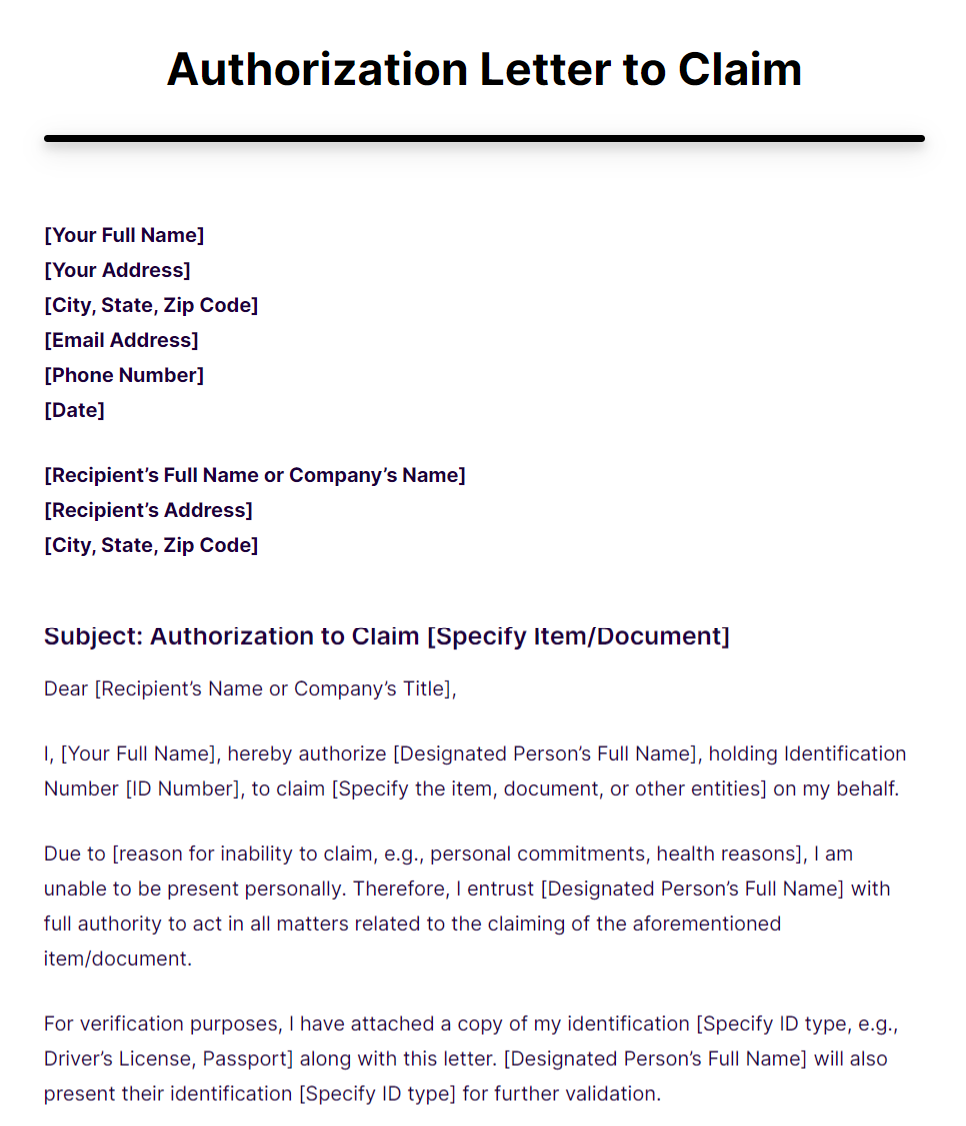
Authorization Letter to Claim Documents
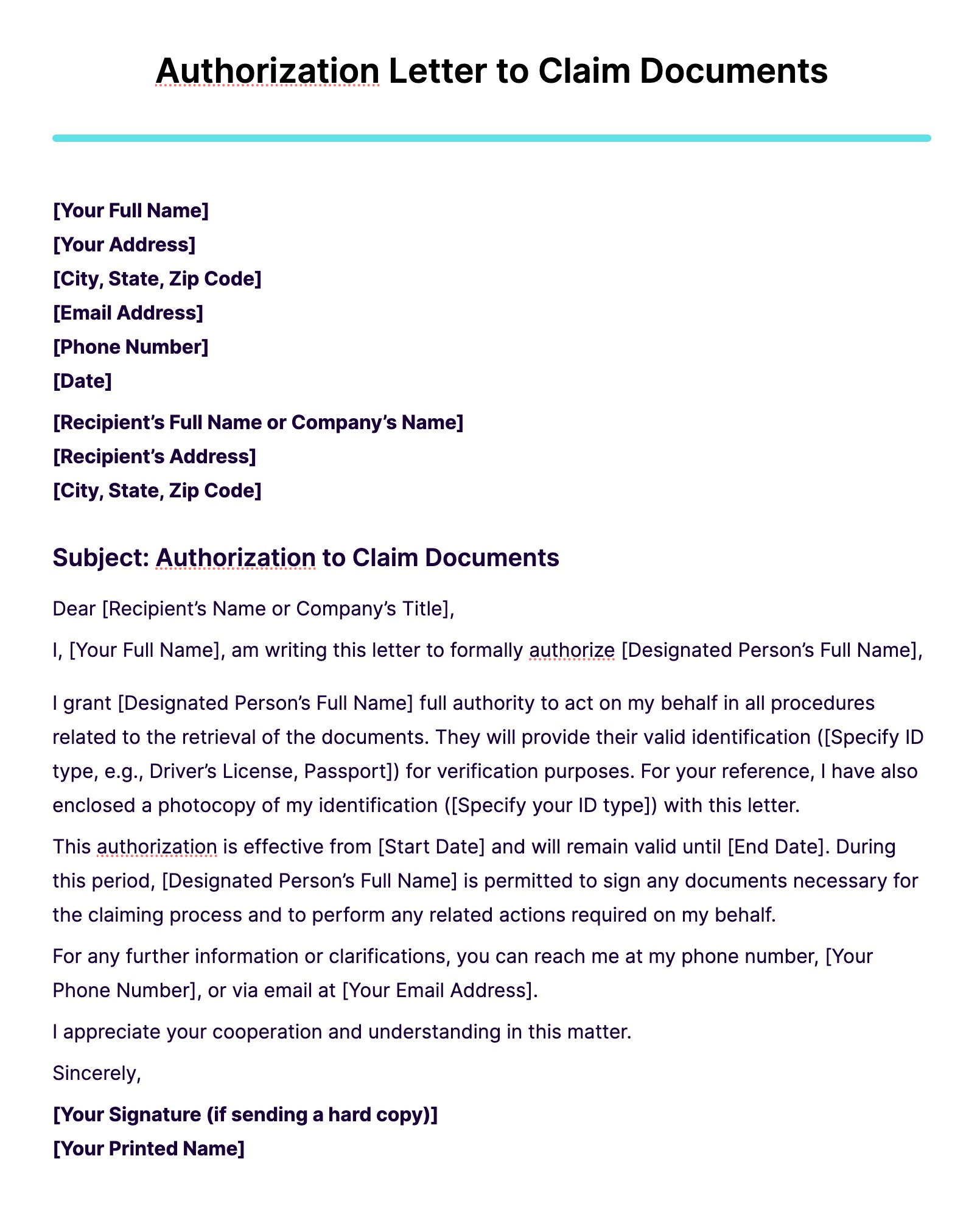
Authorization Letter to Claim On My Behalf
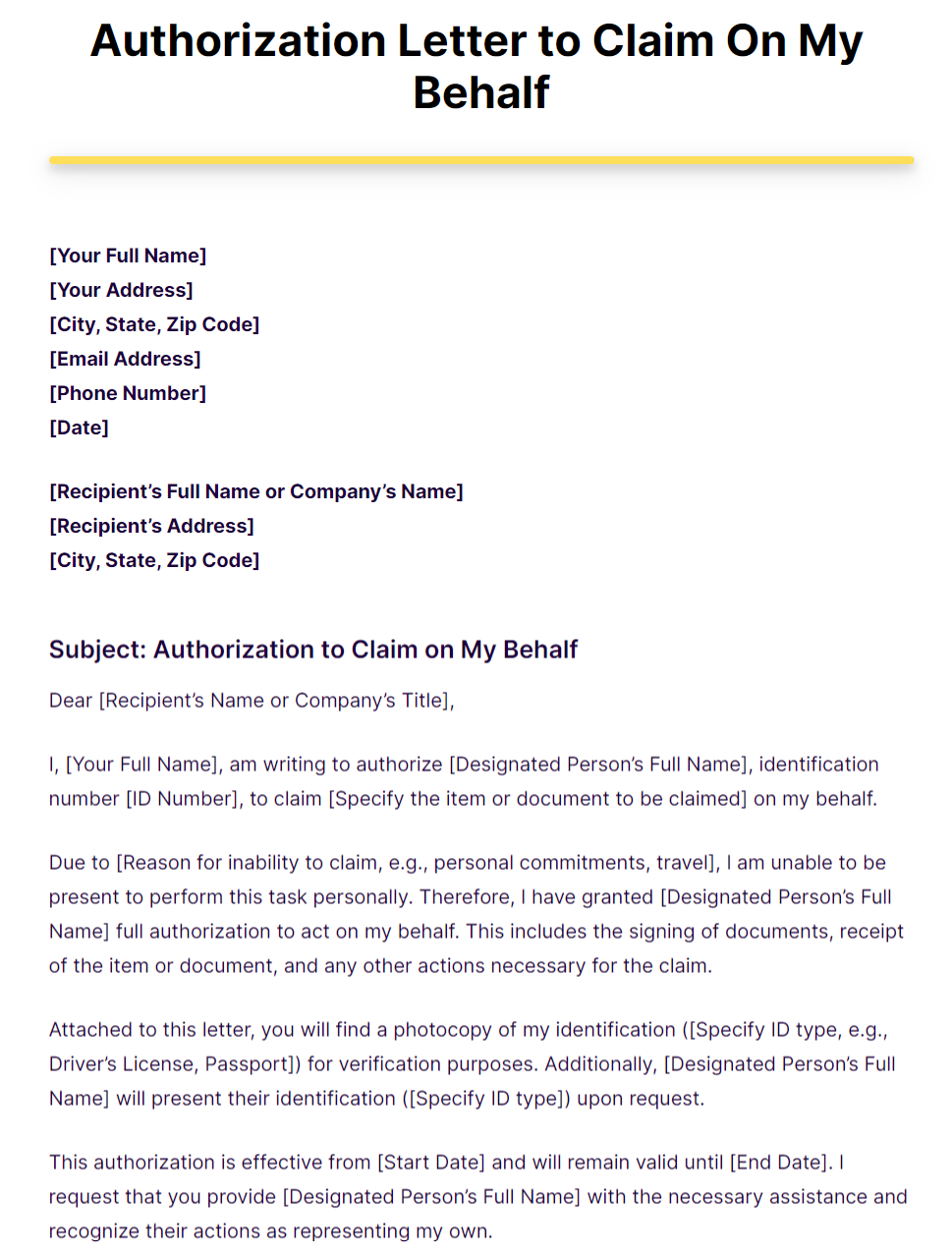
Sample Authorization Letter to Transfer Money Template
Authorization Letter to Perform Work Template
Authorization Letter Template To Sell Property
Free Authorization for Passport Collection Example
Authorization Letter to Claim Cheque Example
Authorization Letter to Claim Envelope Example
Authorization Letter Writing Tips
Writing an authorization may be overwhelming at first especially when you want to say a lot of things yet you do not know where to start. But as you constantly practice writing, you can immediately get a grasp on how to do it with ease. You just need to organize your thoughts, and you have to comply with the basic rules in formal writing.
Afraid to start writing your authorization letter? Here are several useful tips for a well-written authorization letter.
1. Dates.
In writing the date, make sure to specify the correct date so that the receiver will be aware of the range of dates you have delegated your authorities while you are away.
2. Short and exact content
For the content of your authorization letter, make sure to keep it short and use plain words. Keep it brief and straight to the point to avoid confusion by the reader. It is better that you will refrain from using ambiguous or very technical words or jargon as these may create misunderstanding among the parties involved.
3. Informative and specific
Just as any other letters, be specific and informative in your authorization letter. Provide the information with regard to the purpose of your letter, and be sure to give the full details of the person or people whom you have given the authority to act on your behalf.
4. Tone
Keep your tone as formal as possible when you are writing for a business entity or people that you are not so close with. However, you can write casually to people whom you know so well and when the purpose of the authorization letter requires less formal tone of writing. Either way, just maintain a systematized and organized writing and always proofread your write-up. You may also see agent authorization letters.
How to Write/ Make an Authorization Letter
Preparation Stage
- Purpose of an Authorization Letter: It grants another person the authority to act on your behalf in specific matters. This is crucial when you cannot handle tasks due to valid reasons. Common scenarios include financial transactions, bank dealings, claiming documents or items, making medical decisions for minors, and authorizing minors to travel without parents.
- Identifying the Parties: An authorization letter involves the original rights holder (first party), the entity or individual the first party is transacting with (second party), and the proxy or representative (third party).
- Letter Format: Opt for a typed letter for professionalism and readability, ensuring it serves as a credible document, potentially usable in legal contexts.
Writing the Heading
- Format: Follow a standard business letter format with your name, address, and the date at the top left. Address the letter to the second party involved in the transaction, not the proxy.
Writing the Body
- Salutation: Use formal titles and full names. If unknown, “To whom it may concern” is acceptable.
- Content: Keep the letter concise, specifying the tasks your proxy is authorized to perform, including any limitations. Clearly outline the scope of authorization, the effective dates, and provide a reason for the authorization to ensure clarity and avoid confusion.
Finalizing the Letter
- Format and Legality: Maintain a formal tone and block format. Consider making the letter legally binding through notarization or a witness to confirm its authenticity.
- Signature: Sign the letter in blue or black ink and have it witnessed or notarized. Provide the original to your proxy and keep a copy for your records.
Start creating your own authorization now applying the tips presented above or you may refer to the examples in the previous section.
Authorization Letter to Claim Package Example
Authorization Letter to Claim Reimbursement Money Example
Authorization Letter to Receive Documents Example
Detailed Authorization Letter to Claim Example
Formal Authorization Letter to Claim Example
General Authorization Letter to Claim Example
Simple Authorization Letter to Claim Example
How do I write an authorization letter for someone?
Step 1: Format and Address
Start by formatting your letter with your name, address, date, and the recipient’s name, address, and any relevant titles or organizations.
Step 2: Salutation
Address the recipient politely with a salutation such as “Dear [Recipient’s Name].”
Step 3: Introduction
Begin your letter by stating that you are writing to grant authorization to someone. For example: “I am writing to grant authorization to [Authorized Person’s Name] to act on my behalf.”
Step 4: Specify the Purpose
Clearly state the purpose of the authorization. Mention what actions the authorized person is allowed to take on your behalf. For example: “This authorization is for the purpose of [Specify the purpose, such as ‘collecting my documents,’ ‘signing documents,’ ‘making decisions,’ etc.].”
Step 5: Duration of Authorization
Indicate the start and end dates for which the authorization is valid. For example: “This authorization is valid from [Start Date] to [End Date].”
Step 6: Authorization Details
Provide details about the authorized person, including their full name, contact information, and any relevant identification information. This is important to ensure their identity is confirmed. For example: “The authorized person’s full name is [Authorized Person’s Full Name], and their contact information is [Authorized Person’s Address, Email Address, and Phone Number]. They will present their valid photo identification when required.”
Step 7: Responsibilities
Specify the responsibilities or actions the authorized person is allowed to perform. Be as specific as possible. For example: “The authorized person is permitted to [List the specific actions, such as ‘collect my documents from XYZ Agency,’ ‘sign contracts on my behalf,’ ‘make financial transactions,’ etc.].”
Step 8: Signature
Sign the letter at the bottom. If you’re sending a physical letter, sign it by hand. If it’s an electronic communication, you can use a digital signature.
Step 9: Contact Information
Provide your contact information in case the recipient or the authorized person needs to get in touch with you for further verification or clarification.
Step 10: Closing
Conclude the letter with a polite closing such as “Sincerely” or “Best regards.”
General FAQs
How do you start a formal authorization letter?
Start a formal authorization letter with your contact information, the date, recipient’s details, a polite salutation, and a concise introduction explaining the authorization’s purpose.
How do I Claim my passport with an authorization letter?
To claim your passport with an authorization letter, write a letter authorizing a trusted person to collect it, provide their ID, and submit the letter to the passport office or relevant authority.
How do I write a simple letter of authorization?
To write a simple letter of authorization, state your name, grant permission to an authorized person for a specific task, specify details, sign it, and provide contact information.
How to Fill Out authorization letter to Claim?
To fill out an authorization letter to claim, include your name, the authorized person’s details, specify the purpose, sign it, and add the date. Provide contact information for verification.
What is the Purpose of authorization letter to Claim?
The purpose of an authorization letter to claim is to grant someone legal permission to act on your behalf to collect documents, items, or complete specific tasks.
It’s important to recognize that Authorization Letters to Claim are vital for delegating tasks efficiently and securely. For those looking to understand more about the legal nuances of such documents, the Connecticut Department of Banking offers specific guidelines on Standing Letters of Authorization. Additionally, the State of Michigan provides a comprehensive Authorized Representative Declaration – Power of Attorney form, which can serve as a valuable reference for those seeking to authorize representation in financial or legal matters.


